Discover financial empowerment resources
Discover financial empowerment resources
FSRA regulates the credit unions/caisses populaires sector in Ontario. Learn about how this sector is regulated through a comprehensive regulatory framework, and access portals to register a new credit union and...

Financial Services Regulatory Authority, through the Deposit Insurance Reserve Fund (DIRF), provides coverage of non-registered insurable deposits, such as a chequing or savings accounts, up to a maximum amount of $250,000, while deposits in registered accounts, such as RRSPs or TFSAs, have...

Credit unions offer many of the same services as a bank such as cash deposits, investments, mortgages and more. The moment you become a credit union member and make a deposit, your insurable deposits are protected. FSRA, through the Deposit Insurance Reserve Fund (DIRF), provides coverage of...

The Behavioural Insights Team, in conjunction with Fair4All Finance, have worked with three community finance providers to launch a new customer engagement support guide to better improve customer engagement using insights from behavioural science. Building on our work with three lenders, this...
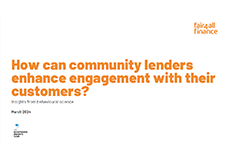
FCAC’s new webpage, Choosing a financial institution, will help consumers determine which type of financial institution best meets their needs. The topics covered include: Identifying the financial products and services you need Deciding if you want all your products and services with one...
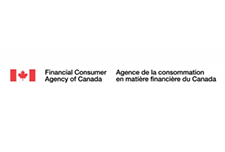
Drive through a low-income neighborhood in virtually any American city and it quickly becomes apparent that the area’s financial health is at risk. The giveaway? The abundance of payday lenders. According to the St. Louis Federal Reserve, there are now more than 20,000 of these organizations...
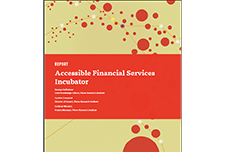
High levels of household indebtedness in Canada has been a concern for policymakers at all levels of government over the past decade. As the economic costs of COVID-19 grow, household indebtedness becomes a faster growing and increasingly more serious concern. While responsive government...
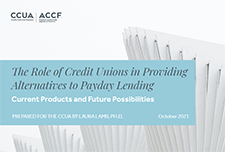
The DUCA Impact Lab defines fair banking as any financial product or service that lives up to the following set of principles: Pricing is clear, transparent, and well understood Pricing is representative of the cost of funds, cost of administration and risk, rather than what the market will...

Everyone needs to bank and nearly everyone has a relationship with at least one financial institution. Financial Institutions need relationships with consumers too, in order to thrive as businesses. The role these relationships play in financial decision making for Canadians is an important...

This report explores consumer financial health, wellness/ stress and resilience for Canadians across a range of financial health indicators, demographics and all provinces excluding Quebec. This report provides topline results from the 2019 Financial Health Index study and three-year trends from...

A large majority of American households live in a state of financial vulnerability. Across a range of incomes, people struggle to build savings, pay down debt, and manage irregular cash flows. Even modest savings cushions could help households take care of unexpected expenses or disruptions in...
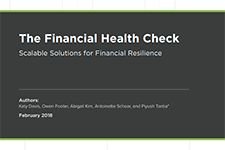
This publication reveals the outcomes of Bridgable's work with a federal credit union, cutting through their overwhelming number of offerings to better engage with their low-income members. It also discusses why agility is a better bet than digitization when it comes to our changing financial...
The report’s primary aim was to analyze the existing microfinance industry in the United States from the point of view of its ability to scale up services to the underserved (the working poor) and its sustainability, i.e., its ability to operate such that MFIs cover all of their operating costs,...
This review looks at the activities, impact, and drivers and barriers to success of four types of community-led approaches: voluntary action, community organising, social action and community economic...
While money has flowed into lotteries in the U.S. and Canada, savings rates in both countries have dried up. What more people do have today is ballooning levels of personal debt, and servicing that debt makes it difficult for individuals to save money. Debt can become the antithesis of wellbeing....
Today, in response to the needs of their communities and members, individual credit unions have chosen their own approaches to financial literacy. Initiatives take a variety of forms including those unique to the individual credit unions who run them independently, or those in partnership with...
This System Brief describes the credit union financial literacy project. It explains the five criteria that were chosen to determine best practices, namely, targeted, interactive, accessible, scalable, and effective. Based on the analysis that came from a scan of over 60 programs, the research...
Despite the strong record of Prize-linked Savings (PLS) accounts historically and internationally, until very recently, only a handful of U.S. financial institutions had encouraged savings by linking chances to win prizes with the act of making a deposit. With the introduction of the Save to Win...
Cornerstone Advisors, in partnership with the Center for Financial Services Innovation (CFSI), produced the following report on strategies for credit unions to attract Gen Y members. The analysis, conducted by Cornerstone Advisors, is based primarily on data from CFSI’s Consumer Financial Health...
With approximately 40 million immigrants residing in this country, comprising nearly 13 percent of the total U.S. population, the opportunity to serve this growing community has never been greater. The prospect of a comprehensive reform of the United States immigration system presents banks, credit...
Banks and credit unions can and should be doing much more to support consumer credit building – and, importantly, they can do so in ways that align their own success with the success of their customers. CFSI has identified a number of initiatives that financial institutions can implement over the...
Behavioural economics is the study of how people make decisions in a complex and textured world where details matter. It draws from the fields of economics and psychology, but brings a unique perspective that departs from each of these fields in important ways. behavioural economics differs from...
